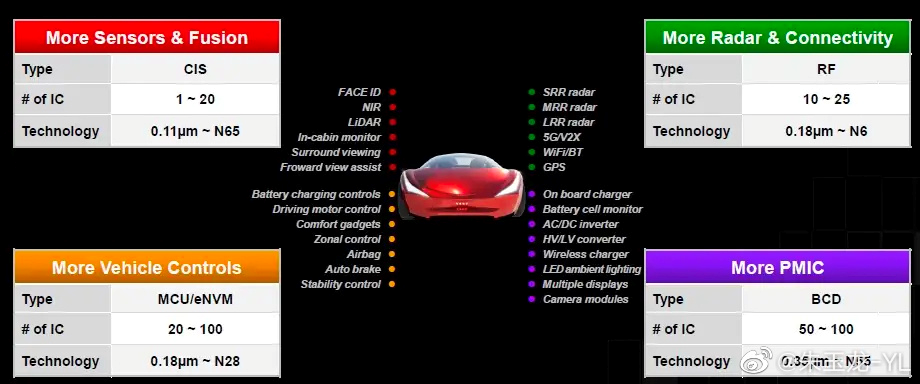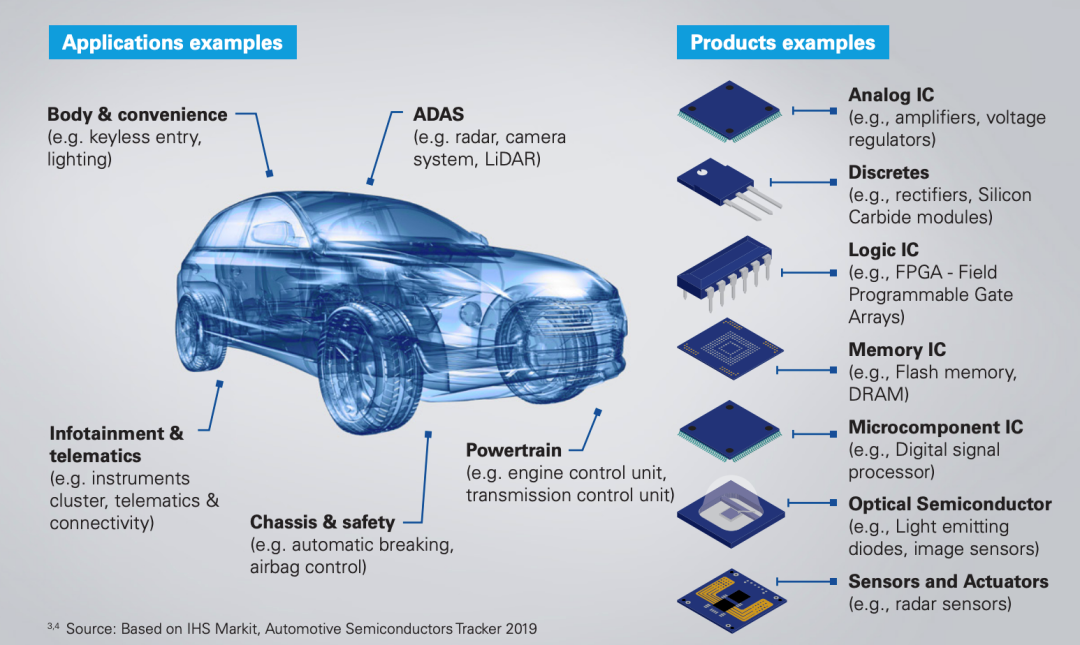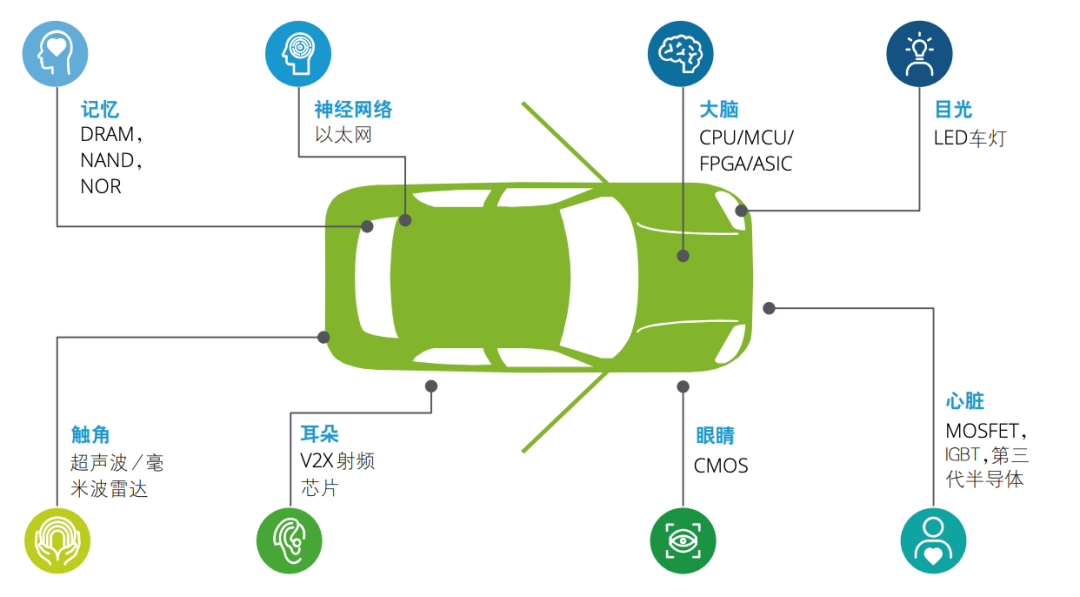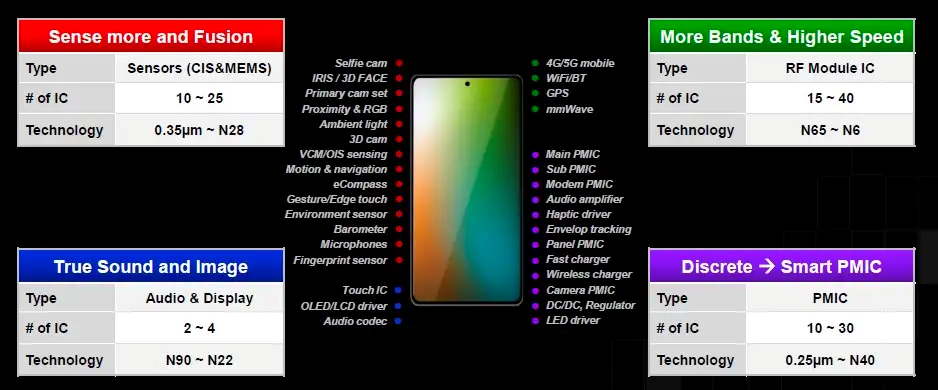Author: Zhu Yulong
Chips have always been an important part of automobiles, playing an increasingly important role from traditional cars to intelligent ones. The problem of “chip shortage” has gradually been alleviated, but the problem of “shortage of Chinese chips” still exists. Today, let’s start with how chips are made, then talk about the classification and application of automotive chips, and finally talk about my expectations and concerns about domestic chips.
How to Make Chips with Sand
Are chips made of sand? Actually, sand is used to make the foundation of chips – silicon wafers.
And the original shape of “silicon wafer” we have all seen before: sand. Ordinary sand is converted into silicon with a purity of about 99.9% under high temperature.
-
Silicon Melting: Melt and pull out pencil-shaped silicon crystal columns from it.
-
Silicon Ingot: Cut the silicon crystal column into a round shape with a diamond knife.
-
Cutting: Finally, polish it to form a silicon wafer, the foundation of chips.
The diameter of silicon wafers commonly seen is 8 inches (200mm) and 12 inches (300mm). The larger the diameter, the lower the cost of a single chip, but the more difficult it is to process.
After the wafer is made, it needs to undergo lithography, doping, cutting, and packaging to become the final product.
The most difficult step is lithography.
- Lithography: Apply photoresist to the silicon wafer.
Ultraviolet light passes through a mask to illuminate the photoresist. The mask carries a pre-designed circuit pattern. The pattern exposed by ultraviolet light is dissolved, leaving the pattern and the mask exactly the same.
Chemicals are used to dissolve the exposed part of the wafer, leaving the photoresist to protect the parts that should not be etched. After etching is completed, all photoresist is removed, leaving grooves one by one.
- Doping: Doping endows the silicon transistor with properties by ion injection.
Boron or phosphorus is first injected into the silicon structure, and then copper is filled in to connect with other transistors.
Finally, a layer of photoresist can be applied on top of it, followed by another layer of structure. Generally, a chip contains dozens of layers of structure like a dense interweaving highway.
- Packaging and Testing
After the chip is made, it is cut off from the wafer with a precision cutter, welded to the substrate, and then sealed with a package. After testing, it can be packaged and sold.
Where are Automotive Chips Used?
Chips have always been an important part of automobiles. In traditional cars, discrete components, analog chips, logic chips, etc. are mainly used to form the traditional electronic controller ECU to control the vehicle.
New energy vehicles will use power chips, which are the “heart” of the electric drive system, including line control, motion control, and steering control, etc., all of which cannot do without power chips.And for intelligent cars, they also require high-performance heterogeneous chips like GPUs, CPUs (Graphics Processing Unit, mainly responsible for accelerating graphic processing speed), NPUs, etc., to form the high-performance SOC chip, which is the “brain” of intelligent cars.
Intelligent cars also require high-capacity storage chips, which are the “memory” of intelligent cars. With the increasing importance of cloud and edge computing in the field of intelligent cars, the demand for memory is increasing day by day.
In addition, intelligent cars also have perception chips and communication chips.
-
Perception chips, such as camera CIS, are the “eyes” of intelligent cars. Laser radar, millimeter-wave radar also requires a large number of RF and optoelectronic chips to provide intelligent cars with sufficient perception ability.
-
Communication chips are divided into two categories. One is the high-speed interconnect chip inside the car, and the other is the chip for communication between the vehicle and the outside world, which mainly transfers data inside the intelligent car at high speed.
Therefore, we can see that traditional cars require more and more chips and higher chip manufacturing requirements in the process of electrification and intelligence.




The impact of the development ceiling of chips on intelligent cars

Under the latest export control regulations, China’s ability to manufacture advanced computing chips and semiconductors has been restricted, specifically in the following areas:
- Logic chips of non-planar transistor structures with a 16nm or 14nm below process (FinFET or GAAFET)- DRAM storage chips with half-pitch no more than 18nm.
- NAND flash memory chips with 128 or more layers.
With the limitation of TSMC’s process in 2021, it mainly affects RF, Logic, advanced Analog, and eNWM chips, casting a shadow on China’s move towards intelligent automobile industry. As the automotive industry is only a terminal application industry, the demand for high-process chips will only become apparent in the next five years or so. Therefore, the development of intelligent cars relies on the breakthrough of China’s semiconductor industry.

Conclusion: At present, we need to continue observing the impact of this regulation on China’s semiconductor industry. What the automotive industry can do is to support the domestic replacement of car chips under traditional processes. Whether there will be a gap in intelligent cars in 5 years is something that I am concerned about.
This article is a translation by ChatGPT of a Chinese report from 42HOW. If you have any questions about it, please email bd@42how.com.
